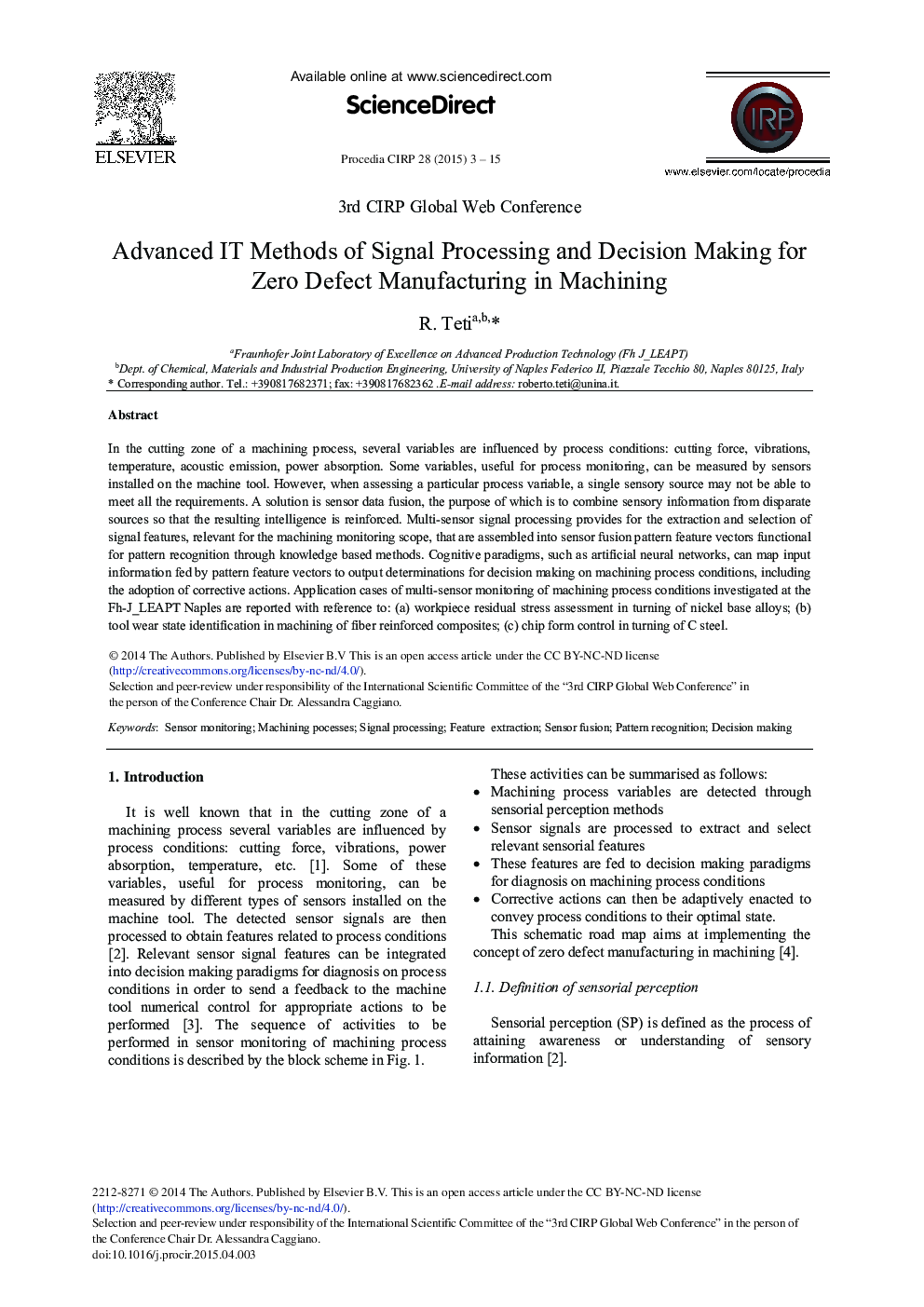| Article ID | Journal | Published Year | Pages | File Type |
|---|---|---|---|---|
| 1699699 | Procedia CIRP | 2015 | 13 Pages |
In the cutting zone of a machining process, several variables are influenced by process conditions: cutting force, vibrations, temperature, acoustic emission, power absorption. Some variables, useful for process monitoring, can be measured by sensors installed on the machine tool. However, when assessing a particular process variable, a single sensory source may not be able to meet all the requirements. A solution is sensor data fusion, the purpose of which is to combine sensory information from disparate sources so that the resulting intelligence is reinforced. Multi-sensor signal processing provides for the extraction and selection of signal features, relevant for the machining monitoring scope, that are assembled into sensor fusion pattern feature vectors functional for pattern recognition through knowledge based methods. Cognitive paradigms, such as artificial neural networks, can map input information fed by pattern feature vectors to output determinations for decision making on machining process conditions, including the adoption of corrective actions. Application cases of multi-sensor monitoring of machining process conditions investigated at the Fh-J_LEAPT Naples are reported with reference to: (a) workpiece residual stress assessment in turning of nickel base alloys; (b) tool wear state identification in machining of fiber reinforced composites; (c) chip form control in turning of C steel.
